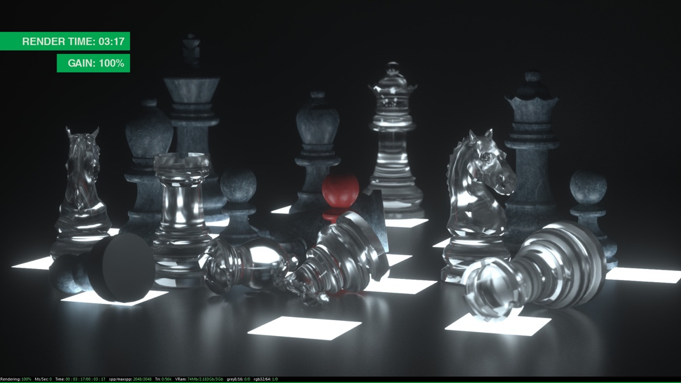While some may be clinging to the last remaining days of 2019, many are looking to the year ahead. Despite exactly what may lie ahead, change is inevitable. Trends are either coming into style, going out of style, or simply transforming. And we’re not just talking about clothes and hairstyles.
Both at VMG Studios and when I’m teaching my class “Character Animation for Motion” at Cornish College of the Arts, we keep on top of what’s new in the industry including trends.
This article will take a look at some of the top trends for animation and motion graphics in 2020. While most of these trends have been around for a while, they all seem to be gaining momentum rather than tapering off.
1. Using 3D Animation to Achieve a 2D Aesthetic
When we think about 2D motion graphics and 3D motion graphics, we think of very different styles. 2D is typically thought of as animated vector illustrations and any perspective is typically an illusion created by the way the illustration is drawn. 3D, meanwhile, is typically thought of as pieces with slick textures, particles, and narrow depths of field.
I’ve been seeing more and more instances of 2D vector aesthetics being built in 3D programs and then utilizing the fact that these seemingly 2D images are actually 3D objects to break viewer expectations. In addition to this, South Park uses Cinema 4D, the primary 3D animation program used for motion graphics, to animate their characters despite the aesthetic of their characters looking like stop motion cut paper characters.
READ: 5 MAIN STYLES OF ANIMATION
2. Drawing on Multiple Frame Rates
“Spider-Man: Into the Spider-Verse” made insanely huge waves in the online mograph (motion graphics) community (it also won an Academy Award for Animated Feature Film in 2018). One of the key elements that made the animation so astonishing were the innovative things the animators did with frame rates.
Rather than have the characters animated where there’s a new “drawing” every frame, they have a “drawing” every other frame like how cel animation usually does. Since then, there has been a lot more playing with different “frame rates” for different elements in a scene in the mograph community.
3. Neon Feminine Colors
We’re starting to see more neon versions of traditionally feminine colors. Research shows women’s favorite colors are blue, purple, green, and red. Brands are embracing neon versions of these color pallets outside of traditionally feminine contexts to appear youthfully energetic and edgy without appearing aggressive and futuristic.
The colors are also being used when the content of a story isn’t traditionally feminine, and the target audience isn’t geared to any gender in particular.
READ: BRAND COLOR PSYCHOLOGY: MEN VS. WOMEN
4. Grainy Dissolve Textures
People in the mograph community have started loving grainy textures that imply light sources on what would otherwise appear to be a 2D vector animation. This trend got its start a few years ago when the hugely influential studio Buck did a video for David Blaine’s Las Vegas music show that featured the grainy textures, which can be made with the dissolve blending mode in Adobe programs.
5. Textured Brushes
Much of mograph is making vector animations because they’re easy and inexpensive relative to other aesthetics. So, more textured and analog aesthetics feel like a breath of fresh air for animators (or at least they do to me).
In the last few years an illustrator named Kyle Webster has been making excellent brushes that imitate analog brushes (and a few other bits and bobs) that you can use in Adobe Photoshop. In fact, Adobe recently hired him so now his hundreds of digital brushes are available to everyone with a Creative Cloud membership, meaning more and more folks are using them in their animations.
6. Abstract, exaggerated characters
Character design and animation has always been a trend as it helps brands connect with their audience. Characters convey emotions and perform actions that people instantly relate to. Quality character animation is becoming more streamlined as new tools and technology make the process more accessible for people with varying ranges of technical skills. With the help of this technology, animators are taking character animation to insane levels. Let’s break down how they’re doing so in 2 ways.
- Abstract
- In order to have more animation capabilities, designers are breaking down characters to the simplest of shapes, sometimes going as far as just a single circle or square. Animators are always trying to convey humanistic actions with as few elements possible, and as uniquely as possible. Abstract body parts and facial features can lead to new and exciting animation possibilities as animators bridge the gap between non-traditional elements and relatable stories and emotions.
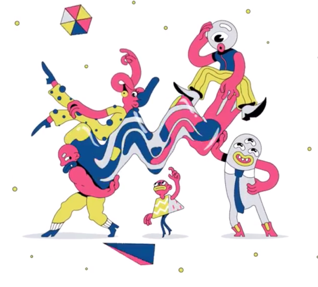
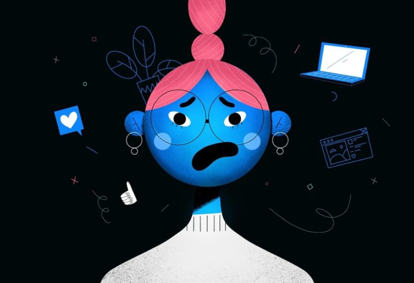
- Exaggerated
- In a different realm of thinking, animators are also experimenting with how far they can push the aesthetic of the human body. While old-school animation would aim for human likeness, modern animation only sticks to the core human body shape. Animators are experimenting with all kinds of neon skin tones, long tube-like limbs with no wrists or ankles, tiny heads, crazy and simplified hairstyles, minimalist facial features, and flowing, organic shapes. Exaggeration can also make characters more versatile, so they don’t have to fit into certain race, age, or gender demographics.
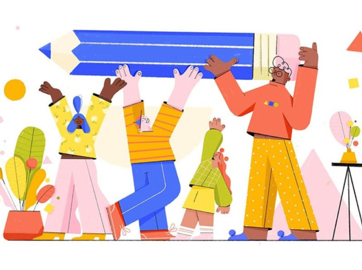
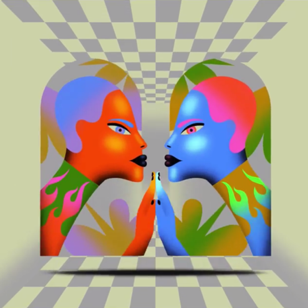
7. Powerful 3D Tools
A huge trend in marketing that we don’t see stopping anytime soon is the use of 3D animation, since there is virtually a limitless amount of possibilities for what you can create. There’s been a huge rise in 3D animation software that can compete with giants like Cinema 4D and CAD. Tools like Houdini, Blender, 3ds Max, Rhino, Katana, and Sketchup (to name a few) are all empowering animators to create like never before.
While animation tools are becoming more powerful and efficient, the bottleneck of that is rendering 3D animation has also grown more powerful and efficient. Animators and designers can now compare things like price, ease of interface, CPU/GPU, GI Method, and hosting capabilities. Rendering will continue to get faster, more efficient, and lead to exciting new capabilities within the animation and gaming communities.
There are also more 3D tools that use algorithms and AI to help increase the production level. PBR, or “Physically-Based Rendering” and Global Illumination can seamlessly make scenes look hyper realistic all based off of the environmental data. And the more advanced 3D animation gets, the less likely we will be able to distinguish real from animation.
Using Animation and Motion Graphics
Creativity and technology are both ever-evolving with endless possibilities. With this in mind, trends are subjective and hard to forecast, however, I see these trends in animation and motion graphics sticking around.
- Using 3D animation to achieve a 2D aesthetic
- Drawing on multiple frame rates
- Neon feminine colors
- Grainy dissolve textures
- Textured brushes
- Abstract, exaggerated characters
- Powerful 3D tools
Trends can crossover into many industries, especially ones that coincide with one another, such as video production, design, and social media. If you understand the forecast for these complementary services, you can stay on top of the market with innovative projects and thought leadership. Let’s see what 2020 brings as we enter a new decade of advancements and imagination.
Click the image below to learn more about the 5 Main Styles of Animated Marketing Videos



